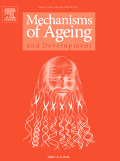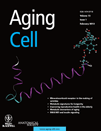
Frontiers in Aging
Scope & Guideline
Bridging Disciplines for a Healthier Future
Introduction
Aims and Scopes
- Biological Mechanisms of Aging:
Focus on the cellular and molecular mechanisms that contribute to aging, including studies on DNA damage, mitochondrial function, and cellular senescence. - Healthspan and Longevity Research:
Investigation into factors that promote healthspan and longevity, including nutrition, physical activity, and therapeutic interventions. - Psychosocial Aspects of Aging:
Exploration of the psychological and social dimensions of aging, including studies on loneliness, social support, and cognitive interventions. - Interventions and Therapies:
Research on various interventions aimed at improving the quality of life for older adults, such as pharmacological treatments, exercise programs, and digital health technologies. - Cross-Disciplinary Approaches:
Encouragement of interdisciplinary studies that bridge gaps between molecular biology, gerontology, nutrition, psychology, and public health.
Trending and Emerging
- Precision Medicine and Genomics:
An increasing focus on genomics and precision medicine approaches to understand individual variations in aging and responses to therapies. - Digital Health Innovations:
Emergence of studies on digital health technologies, telehealth, and smartphone applications aimed at improving health outcomes for older adults. - Impact of Lifestyle Interventions:
Growing interest in the effects of lifestyle interventions, including diet, exercise, and mental health strategies, on aging and healthspan. - Immunosenescence and Aging:
Expanding research on how aging affects immune function, particularly in the context of vaccination responses and infectious diseases. - Environmental and Social Determinants of Aging:
Increased emphasis on how environmental factors, socio-economic status, and community support systems influence aging outcomes.
Declining or Waning
- Traditional Gerontology:
Research that strictly adheres to traditional gerontological methods without integrating newer technologies or interdisciplinary approaches seems to be less frequent. - Longevity Myths and Non-Evidence-Based Claims:
Papers focusing on unsubstantiated claims regarding longevity without rigorous scientific backing have decreased, as the journal emphasizes evidence-based research. - Single-Domain Studies:
There is a noticeable decline in studies that focus solely on one aspect of aging (e.g., only biological or only psychological factors) without considering the interconnectedness of various dimensions. - Aging and Gender Differences:
While gender differences in aging remain an important topic, the frequency of studies focusing exclusively on gender disparities without a broader context has decreased. - Overemphasis on Age-Related Diseases:
Research solely focused on age-related diseases without considering preventative measures or holistic approaches to aging is becoming less prevalent.
Similar Journals

European Journal of Geriatrics and Gerontology
Fostering collaboration in geriatric and gerontological studies.Welcome to the European Journal of Geriatrics and Gerontology, a peer-reviewed platform dedicated to advancing knowledge and research in the fields of geriatrics and gerontology. Published by GALENOS PUBL HOUSE, this journal serves as a critical resource for researchers, healthcare professionals, and students who are involved in the care, treatment, and study of elderly populations. Since its inception in 2019 and running through 2024, the journal aims to foster interdisciplinary collaboration and disseminate innovative research that addresses the unique challenges faced by older adults. With an ISSN of 2687-2625, the journal is classified in the Q4 quartile of the Geriatrics and Gerontology category, signifying its emerging influence within the academic community, despite its current Scopus ranking of #113 out of 116, reflecting a rich opportunity for growth and visibility. Although the journal is not open access, it maintains a commitment to scholarly rigor and quality. Engage with the European Journal of Geriatrics and Gerontology to contribute to and learn from the evolving discourse in aging research.

Physiological Reviews
Illuminating the Complexities of Life Through PhysiologyPhysiological Reviews is a prestigious journal published by the American Physiological Society, dedicated to advancing our understanding of physiology across various domains. With an impressive impact factor that places it in Q1 quartiles for medicine, molecular biology, and physiology as of 2023, this journal is recognized as a leading source of high-quality reviews and research analyses. The journal has been a vital resource for the scientific community since its inception in 1945, providing in-depth and comprehensive insights that are crucial for both scholars and practitioners in the field. Although not an open-access publication, it remains widely accessible through institutional subscriptions, ensuring that crucial research findings are disseminated efficiently. With Scopus rankings that place it in the top percentile across multiple categories, Physiological Reviews continues to be an essential platform for the latest advancements and discoveries in physiology, making it indispensable for researchers, professionals, and students alike.

JOURNAL OF AGING AND PHYSICAL ACTIVITY
Innovating the future of geriatric health and physical activity.JOURNAL OF AGING AND PHYSICAL ACTIVITY is a premier academic journal dedicated to advancing the understanding of the multifaceted interactions between aging and physical activity. Published by Human Kinetics Publishers, this journal serves as a vital platform for researchers, practitioners, and students in geriatrics, gerontology, physical therapy, rehabilitation, and sports science. With an impact factor reflecting its influential contributions, the journal is classified in multiple categories, including Q2 rankings in both Physical Therapy, Sports Therapy and Rehabilitation and Rehabilitation. The scope of the journal spans from 1996 to 2024, encompassing a wealth of research that informs best practices and interdisciplinary collaborations on enhancing the quality of life for older adults. While the journal is not open access, it remains an essential resource for those committed to fostering healthier aging through evidence-based practices and innovative research.

BIOGERONTOLOGY
Transforming Perspectives on Aging and LongevityBIOGERONTOLOGY, published by SPRINGER, is a premier journal dedicated to the interdisciplinary study of biological aging processes and their implications for health and longevity. With an ISSN of 1389-5729 and an E-ISSN of 1573-6768, this journal features cutting-edge research that addresses critical questions in the fields of aging, geriatrics, and gerontology. Ranking impressively in the top quartiles, particularly as Q1 in Gerontology, BIOGERONTOLOGY is recognized for its contributions to advancing the understanding of aging at both molecular and systemic levels. The journal’s rich repository of scholarly articles provides valuable insights for researchers, healthcare professionals, and students alike, fostering a deeper comprehension of age-related biological mechanisms. Although not an open-access journal, it is highly regarded with an impact factor that reflects its significant role in the academic community. The journal spans from 2000 to 2024, ensuring a broad historical context for its studies, and is based in the Netherlands, with its administrative office located at One New York Plaza, Suite 4600, New York, NY 10004, United States. Engaging with BIOGERONTOLOGY means joining a global dialogue on the science of aging and the implications it holds for humanity.

MECHANISMS OF AGEING AND DEVELOPMENT
Unraveling the Complexities of Life's JourneyMECHANISMS OF AGEING AND DEVELOPMENT is a premier academic journal published by Elsevier Ireland Ltd, specializing in the fields of aging and developmental biology. With an impressive Q1 ranking in both categories as of 2023, this journal serves as a vital platform for researchers, professionals, and students seeking to advance their understanding of the complex biological processes that underlie aging and development. Since its inception in 1972, the journal has steadily contributed to the accumulation of valuable knowledge, maintaining a history of rigorous peer-reviewed articles that explore genetic, molecular, and cellular mechanisms impacting aging and development. Its high Scopus rankings—notably 5th in Aging and 8th in Developmental Biology—underscore its significance in the scientific community. While the journal follows a traditional publishing route without Open Access options, it remains an indispensable resource for those dedicated to the investigation of life’s aging processes and developmental phenomena. With publication projected through to 2024, the MECHANISMS OF AGEING AND DEVELOPMENT continues to shape the discourse within these critical research domains.

GeroScience
Connecting Scholars in the Quest for LongevityGeroScience, published by Springer, is an esteemed open-access journal that focuses on the multidisciplinary field of aging research. Since its inception in 2017, the journal has quickly established itself as a leader in its field, achieving impressive Q1 quartile rankings across various categories, including Aging, Cardiology and Cardiovascular Medicine, Geriatrics and Gerontology, and Complementary and Alternative Medicine, as per 2023 evaluations. With a significant impact factor that underscores its influence and reach in academia, GeroScience aims to disseminate high-quality research that addresses the complex challenges and advancements related to aging. Its accessible publication format fosters greater dissemination of knowledge and encourages collaboration among researchers, practitioners, and students eager to contribute to the growing body of work on age-related health issues. As it continues to thrive, GeroScience remains a pivotal resource for anyone looking to stay at the forefront of aging research.

Nature Aging, published by SPRINGERNATURE in Germany, stands as a premier journal dedicated to advancing the field of aging research. With high-ranking performance indicators, including a Q1 classification in Aging, Geriatrics and Gerontology, and Neuroscience (miscellaneous), this journal emphasizes the interdisciplinary nature of aging studies. Its Scopus rankings highlight its impact, achieving remarkable positions such as #1 in Neuroscience and #2 in both Geriatrics and Biochemistry for aging-related research. Although currently not open access, Nature Aging provides a wealth of cutting-edge research and critical reviews that aid researchers and practitioners in understanding the complexities of aging mechanisms and their implications. As the field continues to evolve from 2021 through 2024, this journal not only facilitates the dissemination of knowledge but also fosters innovative discussions that propel the science of aging forward. Join the vibrant community of scholars and professionals dedicated to solving the challenges associated with aging by engaging with the content published in Nature Aging.

CELL CYCLE
Advancing the Frontiers of Cell Biology.CELL CYCLE, an esteemed journal published by Taylor & Francis Inc., stands at the forefront of biological research, focusing on the intricate mechanisms of cell proliferation, molecular biology, and developmental biology. With an ISSN of 1538-4101 and an E-ISSN of 1551-4005, this journal has established its influence in the field with a commendable impact factor reflecting its rigorous peer-review process and high-quality publications. Notably, in 2023, it achieved a Q1 ranking in Medicine (miscellaneous) and a Q2 ranking in both Cell Biology and Developmental Biology, marking its vital role in advancing scientific understanding and innovation. Operating within a converged framework from 2002 to 2024, CELL CYCLE caters to a diverse audience of researchers, professionals, and students eager to explore contemporary findings and emerging trends. The journal's objective is to disseminate groundbreaking research that enhances our understanding of cellular mechanisms, fostering collaboration and innovation. Although not an open-access journal, it remains a premier source for those engaged in cell cycle research, and its contributions have significant implications for fields such as healthcare, biotechnology, and genetics.

AGING CELL
Advancing Knowledge on Cellular Aging MechanismsAGING CELL is a premier peer-reviewed journal published by Wiley, specializing in the rapidly evolving field of aging research and cell biology. Established in 2002 and enjoying an impressive track record as evidenced by its Q1 ranking in both Aging and Cell Biology categories for 2023, the journal has become a vital resource for researchers and professionals alike. With a significant impact factor highlighting its scholarly influence, AGING CELL offers an open access model since 2014, ensuring that groundbreaking research is accessible to the global community. The journal covers a wide array of topics related to the mechanisms of aging at the cellular and molecular levels, making it essential reading for anyone invested in understanding the complexities of aging processes and their implications for health and disease. With a broad international readership based in the United Kingdom and beyond, AGING CELL is dedicated to disseminating high-quality research that impacts scientific understanding and fosters advances in the field.

ARCHIVES OF GERONTOLOGY AND GERIATRICS
Advancing knowledge in aging and geriatric care.The Archives of Gerontology and Geriatrics, published by Elsevier Ireland Ltd, is a leading journal in the fields of Aging and Geriatrics and Gerontology. With an ISSN of 0167-4943 and an E-ISSN of 1872-6976, it has established itself as a crucial platform for disseminating high-quality research focused on the biological and psychosocial aspects of aging. The journal holds an impressive Q2 ranking in both Aging and Geriatrics and Gerontology, and a Q1 ranking in Gerontology and Health (Social Science) as of 2023, reflecting its significant impact in these disciplines. Additionally, the journal is ranked #33/371 in Social Sciences (Health) and #5/39 in Nursing (Gerontology) according to Scopus, showcasing its esteemed position in the academic community. Although currently not open access, the journal offers a wealth of research articles from 1982 to the upcoming 2025 that are vital for stakeholders including researchers, healthcare professionals, and students aiming to advance their understanding of aging processes and policies. Titles published within its pages contribute to shaping agendas in public health and gerontological practice, making it an essential resource for those involved in the study of the elderly population.